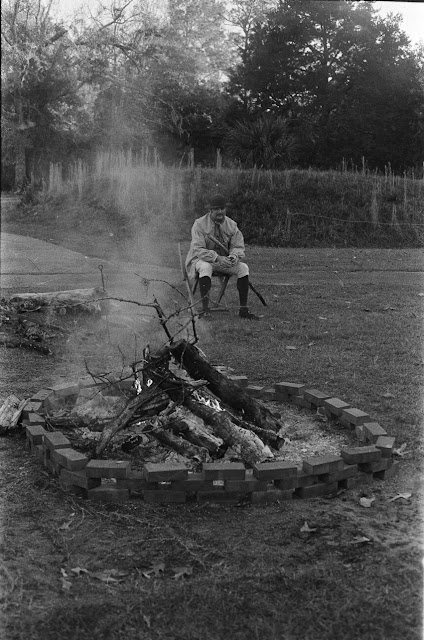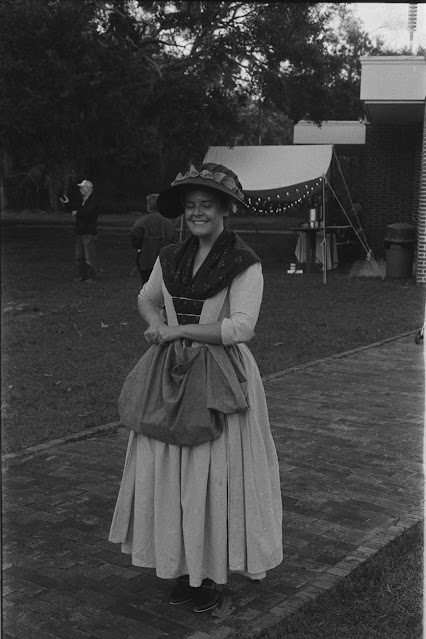I took some money I’d received as birthday gifts and went looking for a new old camera. I wanted a 35mm slr (as opposed to the rangefinder I already have in the Petri 7S) produced sometime around mid-century. What I found was the Canon EXee.
This was a transitional product in a couple of ways. It represented Canon following the public’s shift away from rangefinders. It wasn’t the company’s first slr but it was one of the first. It also sought to reach that transitional spot among photography amateurs turning into serious hobbyists.
I think this sort of wishy-washy positioning is what led to some of the weirdness that I also think has left this camera model relatively undiscovered by the new breed of film photographers. I kind of like a misfit, though, and because they aren’t widely sought after, these cameras can be had in good shape for under $100.
The first strange feature is its interchangeable lens system. Many mass-market, non-pro level cameras, such as my Petri 7S, have a lens that is built entirely into the camera. The Petri lens is great, but it is what is, there’s no option to go wider or telephoto. The upside is a simple, light design and a lens that can be closer to the film plane making it easier to capture sharp images at slower shutter
speeds. Professional cameras at this time had interchangeable lenses with a huge variety of options in one of many lens mount designs.
The Canon EXee sort of splits the difference here. The base of the lens, the part closest to the camera body, is built in, but the outer piece can be unscrewed and changed up with a few options. I bought a model that came with the most common 50mm lens, but a 35mm wide angle and both 95mm and 135mm telephotos are also available. That isn’t nearly the number of options available for Canon’s EF mount lenses made for the pro-level cameras of the time, but it does offer some flexibility. Also, because you’re really buying essentially half a lens, the EE lenses are, and were at the time, very affordable. The other advantage is that this camera retains some of a fixed mount lens camera’s slow shutter speed stability. It’s definitely strange, but I think it’s also pretty cool.
Canon also got creative in its attempt to split the difference between fully automatic and manual controls. This camera has very strange aperture controls. I guess they were trying to simplify the exposure triangle by putting one side of it completely in the hands of the camera? They were pretty proud of their idea, I guess, because that’s where the EE designation comes from. It stands for “Electric Eye”, which sounds more ominous than they intended I think. In EE mode, you select the film ISO and a shutter speed (from 1/8 sec to 1/500 sec) and the light meter selects an aperture for you. The light meter gauge you see in the viewfinder tells you the aperture, rather than the scale of under- to overexposure in other cameras. There is a manual mode for selecting your own aperture, but you kind of have to guess as the control only has the max f16 and minimum f1.8 settings displayed.
And the light meter still just tells you your aperture, not whether it not you are exposed correctly. The system isn’t so much difficult to use as it is just weird. It will take some practice and experimenting to figure out how to make this camera do what I want it to do rather what it wants to do.
My first test did not go well, but it was due to old processing chemicals rather than the camera itself. My results with a second roll of 400 speed B&W film were truly encouraging. One thing I noticed was that the images I took in the late evening (when I was really pretty sure there wasn’t enough light) came out much better than the ones in full sun. I’m not sure if that has to do with the metering of the camera, the accuracy of the settings or the film I was using, but time will tell. I’m excited that the camera did so well in low light, actually. Some of these photos that I thought would be throw-always turned out to be great.
My next step is to try a lower ISO (200 speed in tis case) B&W film to see how that fixes the problems in full sun. After that I’ll venture into color films. I’m looking forward to the adventure and may even try to get a wider angle lens from eBay before a trip to the mountains of Alabama (yep, Alabama apparently has mountains) early next month.













No comments:
Post a Comment